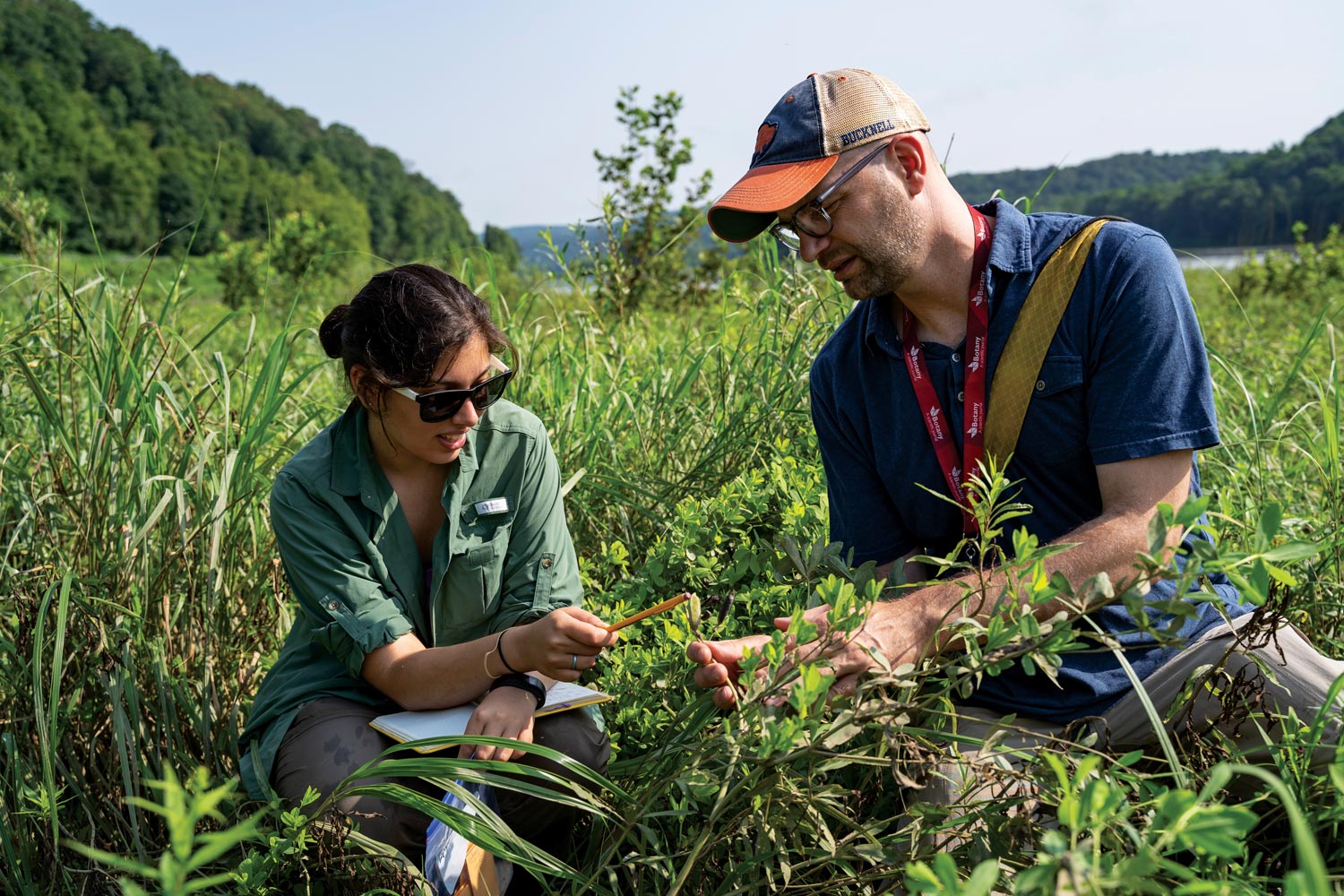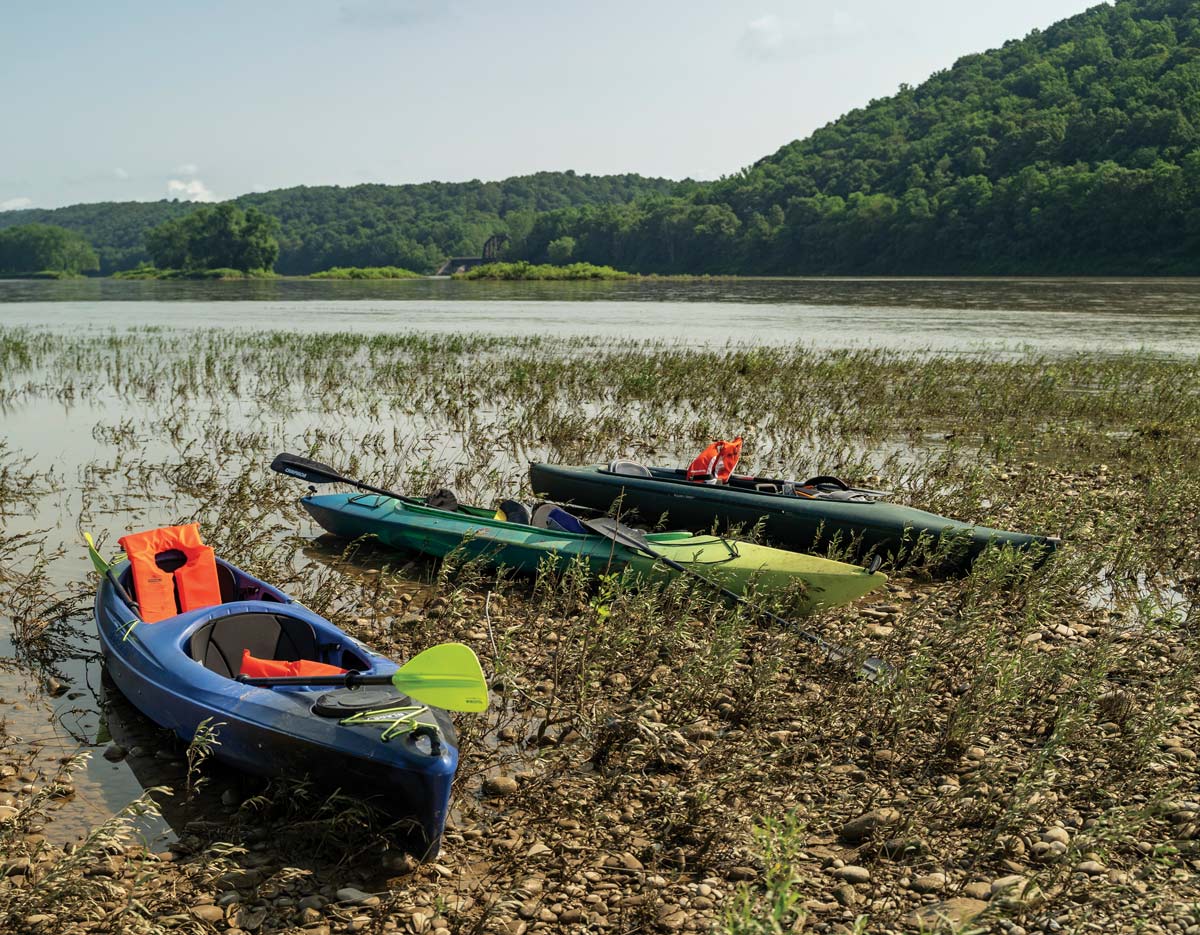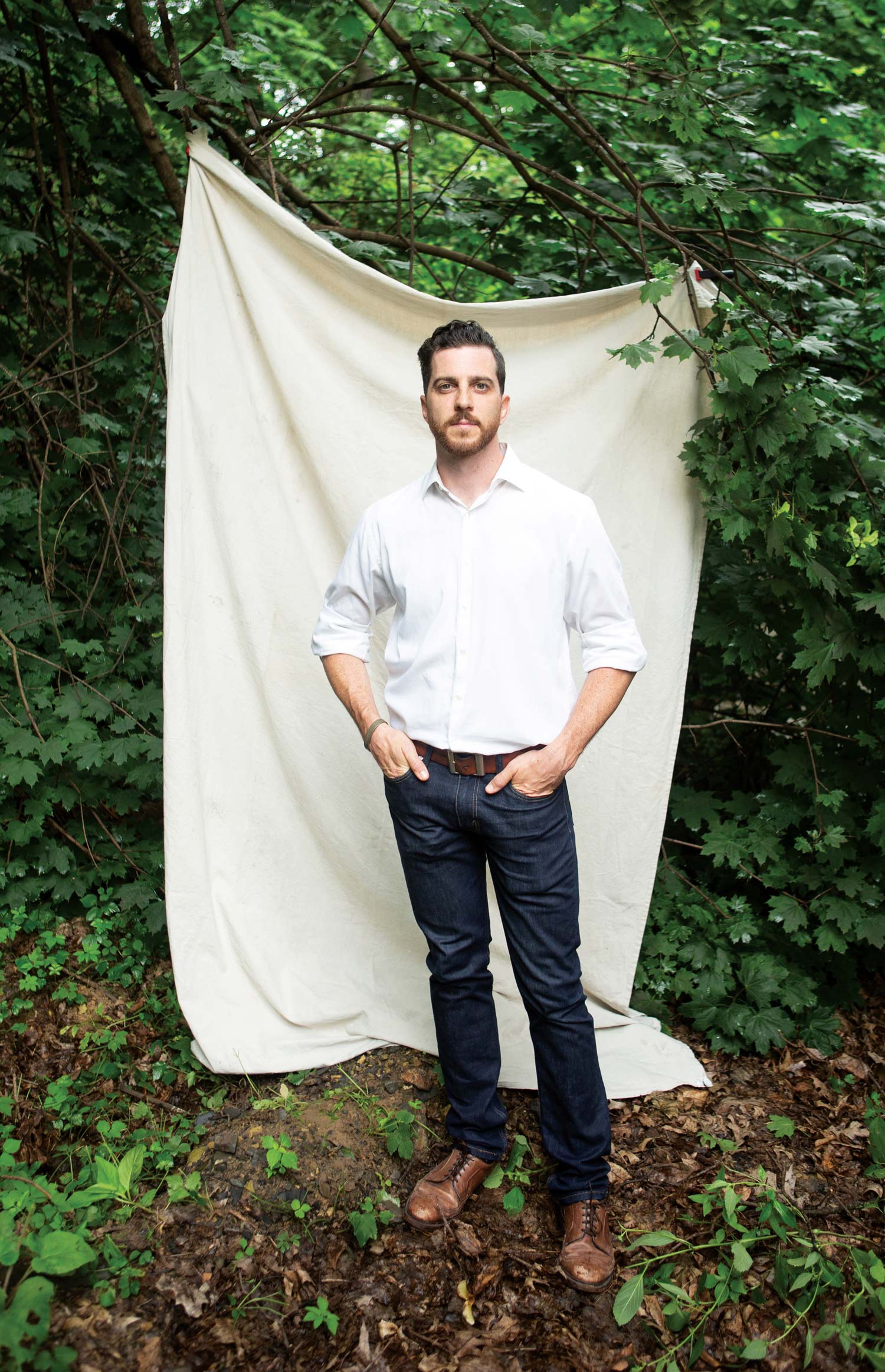If you’re like many people, that last question in the exercise is hardest, says Professor Mick Smyer, psychology, who has queried many people in workshops during the past few years. “I have asked more than a thousand people, and everyone has a place they care about, everyone knows what the threat is, and everyone knows what they’d like it to look like,” he says. “But the question of what to do about climate change stumps 50 to 80 percent of people.”
Smyer began creating programs around climate change after Hurricane Katrina decimated his hometown of New Orleans in 2005, amid increasing research showing that climate change influences the severity of hurricanes. As a longtime gerontologist who has studied the psychology of aging, Smyer started focusing on older people, calling his program Graying Green. Seniors are often overlooked when it comes to climate- change education but can be a powerful group when motivated.
To help people visualize how they can combat the effects of climate change, in his workshop Smyer distributes a deck of cards offering 30 specific actions, ranging from reusing water bottles to transitioning to solar energy. The back of each card contains information about the action’s carbon impact. Participants then sort them into three piles: one for actions they are already doing, another for actions they might do and a third for steps they definitely won’t take — to create a personal climate journey.
“People start sharing them with their neighbors, and my hardest job is to get people to quiet down,” Smyer says. His goal is for each person to walk out of the room with a signed pledge to take one new action to combat climate change. “Roughly 60 percent of them follow through,” says Smyer, who is now expanding the workshops from seniors to other age groups. “That’s pretty impressive when you consider the workshop takes less than an hour.”

A concept such as climate change can seem particularly esoteric and abstract — with talk of greenhouse gases in the atmosphere and catastrophic weather halfway across the globe — so people have a tendency to throw their hands up in frustration, or worse, tune out altogether.
“In the United States, we have what I call a ‘climate avoidance habit,’ ” Smyer says. “It’s such a big problem that it makes people crazy, so they just say, ‘I’m not going to think about it or talk about it.’ ” By concretizing the problem and offering specific steps people can take to address it, a program like Smyer’s educates and empowers people instead. “It turns out that the strategy I am using — combining psychology, human-centered design and climate communication — works pretty quickly to cut through the avoidance and give people a sense of their next steps,” he says.

With political polarization so intense now, both left and right are firmly planted in their respective positions — one side asserting that climate change is a dire, manmade crisis happening now, the other equally fervent that climate change is exaggerated or merely part of a natural climate cycle. Slater says one might expect increased knowledge about climate change would bring both sides together in consensus. However, studies show the opposite is true — political polarization about climate change is more extreme for those who are scientifically literate. “The gap between right-leaners and left-leaners increases as scientific literacy increases,” Slater says.
To figure out what’s behind this gap, Slater began in 2014 a project called the Production of Public Understanding of Science with Professor Jason Leddington, philosophy. Along with postdoctoral researcher Joanna Huxster, now an environmental studies professor at Eckerd College, the group homed in on a fundamental difference between scientific knowledge and understanding. “It’s one thing to know some things about science or have isolated scientific facts, but it’s quite another to understand a phenomenon or how science works,” says Slater, who now directs the project in collaboration with Huxster. Public opinion surveys typically just get at knowledge, leaving understanding unaddressed. “Just finding out if you have correct views about the world doesn’t tell me whether you understand scientific phenomena.” And understanding — particularly of the scientific enterprise — Slater believes, is crucial to resolving the polarization puzzle.
“Why should we trust science?” he asks. After all, Slater points out, science history is littered with the wreckage of ideas that turned out to be wrong, like the idea that the sun revolves around Earth. “Science has more often been wrong than it has been right.” But Slater says what we can trust is the process by which those ideas are formed — leading at least 97 percent of scientists to agree climate change is real and caused by humans.
“What makes science epistemically special is that scientists are working together to test and contest one another’s claims,” Slater says, adding that it’s unrealistic to believe there is a vast conspiracy of scientists pushing the idea of climate change. “If you understand how science works, then you probably appreciate how difficult it would be … having all of these scientists in on a grand hoax. It is ludicrous.”
In doing interviews with members of the general public on the idea of scientific consensus, Slater found people generally don’t understand the concept. “Most people don’t seem to recognize the phrase or attach meaning to it,” he says.
Creating scientific literacy, then, may be less about filling people’s heads with scientific facts and more about helping them understand the history of science and how ideas are created. “It’s one thing to get someone to believe that the earth orbits around the sun; it’s another to show how scientists came to know that and the social processes behind it,” Slater says. “It’s not that science isn’t messy; it’s that science is messy and chaotic, but we haven’t figured out a better way of learning about the world.”
Unfortunately, the media may be failing to spread that message. Emily Scholfield ’22, a biology major and philosophy minor, works with Slater on a project examining how major newspapers convey scientific understanding. “With the political landscape what it is right now, it’s difficult to sort through the news and separate science from pseudoscience to figure out what’s real and what to trust,” Scholfield says. Working with a database of some 200 articles from The New York Times, The Washington Post and USA Today, Scholfield applies codes to indicate whether they merely state scientific facts or explain them in the broader context of the scientific process to show the social aspect of scientific inquiry.
Although the research is still in an early stage, Scholfield already sees that many articles, especially on health topics, don’t cite scientific research, but merely quote scientists or politicians supporting a particular opinion. “It’s important for society that we have a real conversation between scientists and journalists explaining how the scientific community works,” Scholfield says. “If we don’t explain to the public what we are doing and why it’s trustworthy, then we open ourselves to having people dismiss what we are saying. They don’t understand what is going on, so they don’t think it’s real. It’s important to explain why scientists are worth trusting.”
At the same time, she’s given back to communities by using a relatable part of nature to share scientific concepts. “Fireflies are something that seem so familiar, especially on the East Coast, where you catch them as kids,” Lower says. It surprises people, however, to learn that there are more than 2,000 firefly species, each using a distinct combination of flashes to attract mates. In 2012, Lower worked with other scientists on a biodiversity survey in western Pennsylvania’s Allegheny State Forest. “We found a lot of species there that were really extraordinary,” she says. After interacting with members of the public, the local community organized an annual firefly festival. “It gets bigger and bigger every year,” says Lower. “It’s been exciting to see it grow.”
The festival includes guided nighttime hikes with naturalists and talks by scientists like Lower to educate the public about their research. “The thing I really like about my work is that I can span from animal behavior you can see in your backyard all the way down to the genetic level, which is something you don’t always get in science,” Lower says.
This year, in collaboration with Professor Gregory Pask, biology, and Matt Lamparter, director of electrical engineering labs, research students created an electronic firefly that demonstrates the chemical reaction that fireflies use to produce light. At the festival, adults and children alike were able to use this firefly to create their own flash patterns and learn about the energy efficiency of the light reaction. “You need to start from a position of what people are familiar with and take them gradually out from there,” she says. “I’ll often describe firefly flashes as Morse code, where each species has its own code.”
This past year, Lower also increased her public outreach by writing an article for Scientific American with Cheyenne McKinley ’20. Called “11 Cool Things You Never Knew about Fireflies,” the article included fascinating facts about the nocturnal insects. They’re not flies at all; they’re beetles, they say, and “femme fatale” fireflies lure mates to eat them, mimicking male behavior of other species.
In her work, Lower emphasizes why the public should care about these wondrous, biodiverse creatures now threatened by habitat loss and climate change. Basic research about fireflies’ luminescent enzymes was used by the military to develop energy-efficient light technology and by cancer doctors to visualize the spread of tumors, which enabled other medical breakthroughs to treat the disease. Lower’s biggest argument for fireflies, though, is the simplest: They create a sense of wonder. “Think about what it would be like if there weren’t any more fireflies,” says Lower. “How sad would that be?”
Martine, who briefly considered an acting career, wondered if he could do something similar for plants by producing and hosting his own program. With funding from the Botanical Society of America, Martine worked with producers to create the web series. During the last six years, he’s produced more than a dozen shows with nearly 150,000 views combined. Oftentimes, the actual number of views are higher, since schools are using them in classrooms to educate students, Martine says.
“While we should have genuine appreciation for all the critters we share the planet with, I am trying to generate enthusiasm for all the biodiversity of plants out there,” Martine says. After all, animals often become endangered and extinct due to a loss of habitat or food source, and that means plants. “The basis of all these communities are these green photosynthesizers,” Martine says. “They are of utmost importance in the functioning of the planet. If we don’t understand plants, we don’t understand how the planet works.”
In Plants are Cool, Too!, Martine takes on the role of “semi-educated outsider” traveling around the country talking with botanists about their research. “The main goal is not just to tell stories about cool plants, but also to tell stories about the dynamic and interesting people who study them,” Martine says. One video showed scientists rappelling off cliffs along Pennsylvania’s Susquehanna River to find rare species; another featured a nighttime trip into New Mexico’s white sands desert to see the giant hawk moths, those elusive cactus-flower pollinators.
While he has worked to translate science into terms kids can understand, Martine finds that it’s his passion that engages viewers more than anything. “My secret is just to be excited about whatever we’re talking about,” he says. “If I am geeked-out about something, people can’t help but look.”
Since Martine arrived at Bucknell in 2012, the University has helped fund his series, and students have pitched in to help with production. Martine has even featured work by a budding Bucknellian botanist. An episode to be released this academic year introduces one of Martine’s advisees, Cheyenne Moore M’20, who studies a rare Pennsylvania plant called blue false indigo.
“It only occurs along four rivers in the state,” says Moore, who’s examining threats to the plants from invasive species and climate change. A large part of her research includes using genetic tools to understand how the genetic health of the plants varies along rivers. The episode uses drone-mounted cameras to capture Moore and Martine kayaking along the Allegheny River hunting for plants and recording details about their health and environment, as well as collecting tissues for DNA extraction. Moore is excited about the opportunity to showcase her research, which is a collaboration between Bucknell and the Western Pennsylvania Conservancy. “It’s great, because there is a real-world conservation question driving the research,” she says. “This is one of the main reasons I came to Bucknell to pursue my master’s — I want the work I do to matter.”
Stuhl says that children often forge connections with nature. “These are the times in our life when we are playing in creeks or climbing mountains, and that’s the time when we feel most free.” But students often lose that connection as they grow older — at about the age when they are able to do something about the environment. “More and more of our lives are disconnected and spent in front of screens, in cars and indoors,” says Stuhl. “I want to teach college kids who are poised to understand and vote and act about environmental issues. At the same time, I want to explode the notion that the environment is ‘out there’ and help people understand that every choice they make has a ripple effect on the community and the environment.”
Stuhl’s research focuses on the challenges of climate change in the Arctic and its indigenous communities. Because he can’t take students to the Arctic, Stuhl lets Pennsylvania winters stand in as a close equivalent, allowing students to experience frigid temperatures while learning how plants and animals adapt to the cold. On a weekend camping trip at Bucknell’s Forrest D. Brown Conference Center in Cowan, Pa., students learn to insulate their tents from the cold ground and conserve warmth inside their sleeping bags.
In his course on environmental humanism, Stuhl integrates scientific knowledge with matters of values and ethics. One module, for example, looks at the food system and what it will take to sustain it in the face of a growing world population. While there’s plenty of science and technological research on the problem, Stuhl says science alone cannot resolve thorny issues such as pollution and equal access to food.
“What we are really asking is, ‘What are the limits of scientific knowledge when it comes to understanding environmental problems?’ The best decisions will come from a combination of science with moral and ethical understanding,” Stuhl says.
In another unit, the class considers the ethics of national parks and natural areas. “A conservation biologist will tell us they are really important for protecting biodiversity and scientific research, but history tells us that the act of setting aside these areas had a violent history, often dispossessing indigenous people and moving them off the land,” Stuhl says. He adds that the idea of “untouched” wild land is often a fallacy, as national parks need roads built and trees removed to provide public access. “We have to break down this idea a little bit and ask how we feel about the way nature has been manicured. Is there a mechanism for conservation that doesn’t involve displacing people from the area?” he asks.
Stuhl is challenging all of campus to consider these issues. This spring, he sponsored a campus town hall meeting about the Green New Deal, a U.S. House of Representatives resolution to combat climate change. Stuhl invited community members, including dairy farmers and lifelong coal-region residents, to offer their perspectives. For Stuhl, the most interesting aspect was that the conversation did not collapse into partisan pockets of red and blue.

“As a society, and as a country, we are moving past the point where we think scientists have all the answers,” Stuhl says. “The idea that as a scientist you plop into a community and do a study and propose a policy is pretty outdated. The new model is for researchers to say we are not just doing research on you, but also with you and for you. We need to recognize that a lot of knowledge is held by a lot of different people. Scientists are one source, but there are also a lot of other knowledge holders. If we are going to go far, we are going to have to do it together.”